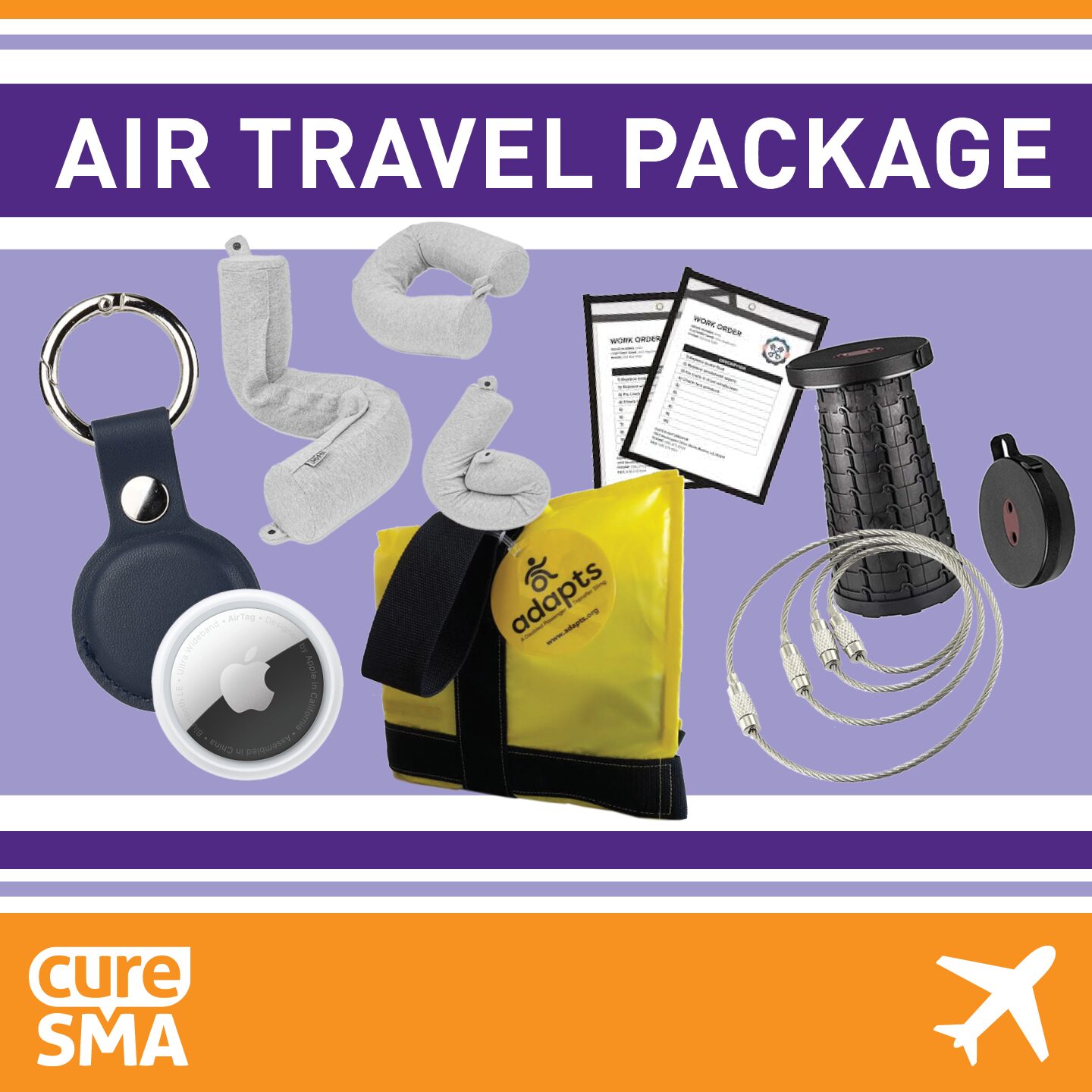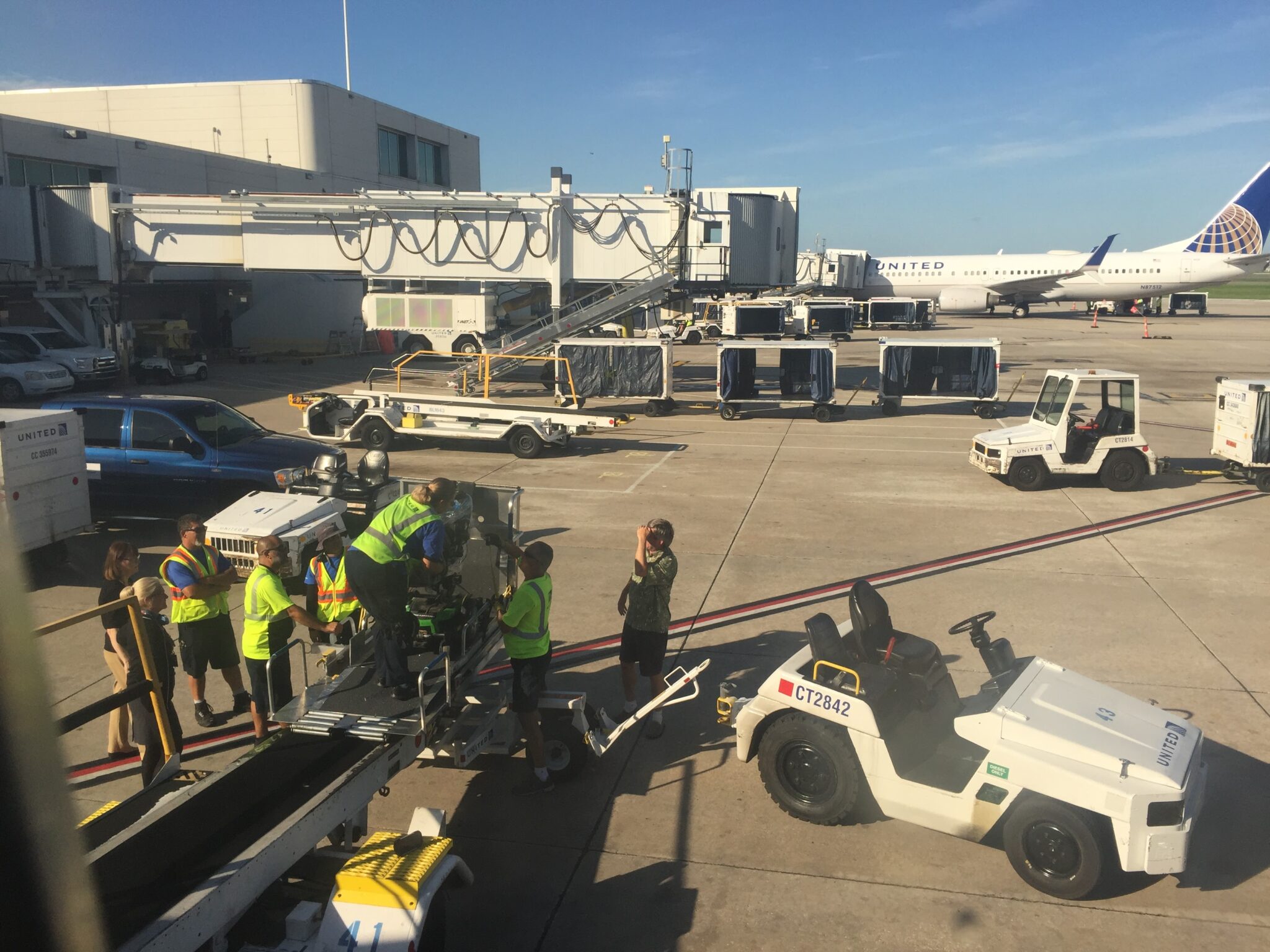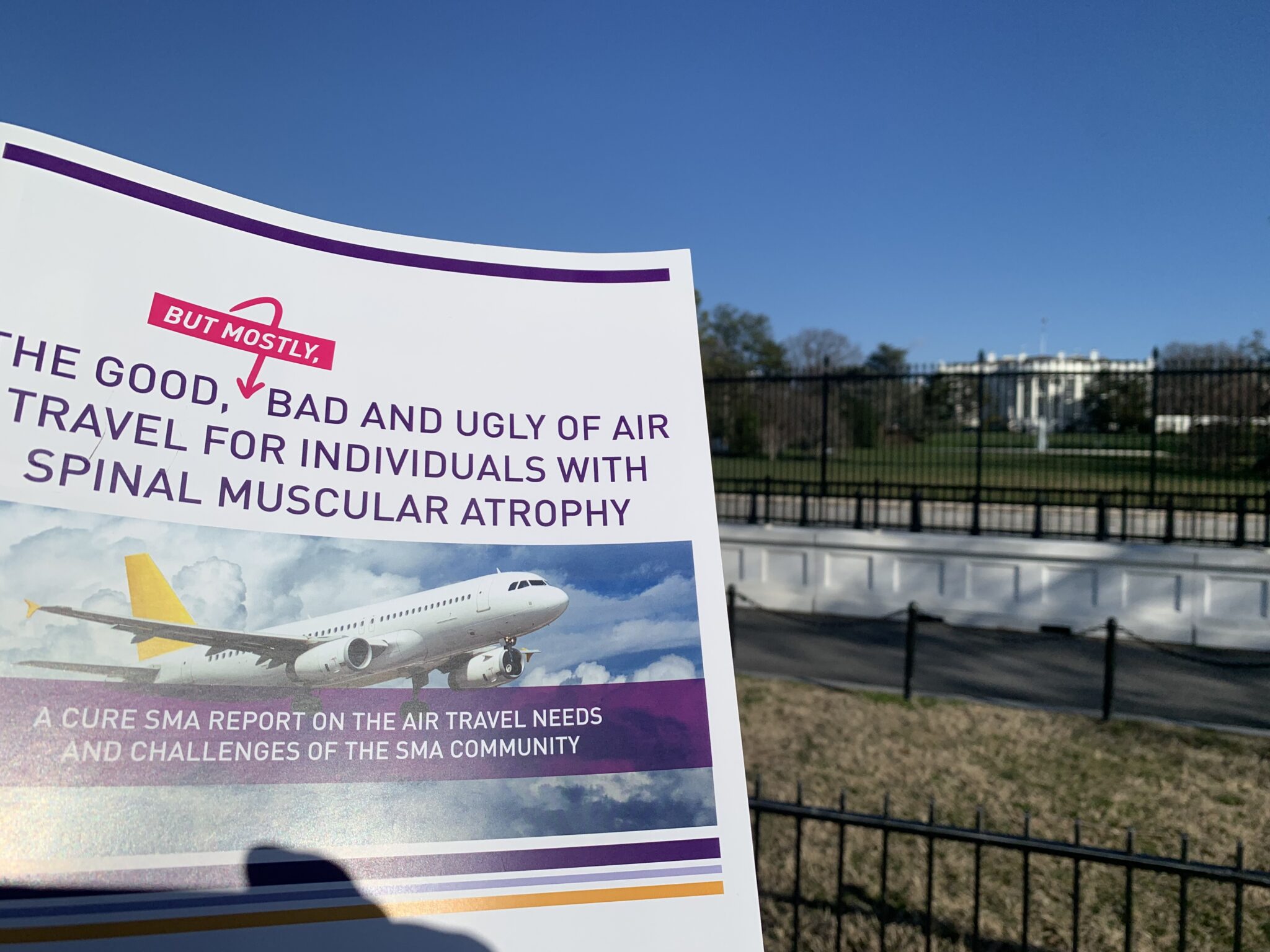Traveling with SMA
Traveling with SMA is often stressful and can require additional planning so we have pulled together a variety of resources as well as a travel support package to help make traveling easier, safer and more comfortable.
Quick Links
Travel Related Support Programs
We offer a variety of travel related support programs to assist individuals with SMA. See below for program descriptions and links to apply for programs related to traveling.

Cure SMA Travel Support Package
Travel can be difficult no matter what. This is why Cure SMA has created a travel support package filled with recommended assistive travel equipment to assist a person with SMA in flying more safely and comfortably. This package is currently available to adults with SMA who reside in the U.S
Items in Cure SMA's Travel Support Package include:
- ADAPTS Portable Transfer Sling - a portable and lightweight manual lifting sling that is placed over an airplane seat and then ready for anyone nearby to assist a disabled traveler quickly to safety. It can also be used for safe and dignified transfers to and from the aisle wheelchair—or anytime/anywhere as a quick transfer device. ADAPTS is made of the material used for life-vests and is water-resistant and flame-retardant to comply with FAA safety standards.
- Apple AirTag - provided for user to attach to mobility device so that they can track the location of their wheelchair when it is gate checked and they are separated from it.
- Apple AirTag Case Holder - provided to protect the AirTag and securely attach it to your mobility device.
- Twist Memory Foam Travel Pillow - can be used to support your neck or can be opened and used as a side, back or leg support.
- Job Ticket Holders - can be used to protect printed out signs and custom tags to attach to mobility devices.
- 6” Wire Keychain Cables - can be used to attach job ticket holder signs to mobility devices.
- Twist n Lock Stool - can be used as a portable foot stool inflight for those whose feet don’t touch when transferred to an airplane seat. Stool is very sturdy and supports up to 330lbs and can adjust up to 18” tall accommodating many different heights.
To see eligibility criteria and request a package click here.
Cure SMA Travel Resource Guides
Cure SMA offers resource guides to support those with SMA on a range of topics to enrich daily living at home and in the community. Below are the guides currently available related to traveling:
Travel Guide
Know Your Rights When Traveling by Airplane
Air Travel Resource Guide
Airplane Cargo Hold Dimensions
Air Travel Checklist
Guide to Creating Your Own Custom Wheelchair Tag
Customizable Attention When Handling Instructions Sign Template
To see a full list of resource guides currently available and to request PDF copies via email please click here.
Helpful Travel Resources and Links:
From travel guides, Facebook groups, and more, check out this comprehensive list of helpful travel resournces and links!
Custom Wheelchair Tags:
SMA Community members have creatively problem solved the challenges that arise when flying with a mobility device like a wheelchair and have created a variety of tags, graphics, and instructions that attach to a wheelchair so that when you're not with the chair, you can still communicate to airline staff how to properly and safely handle the chair. Taking this additional step of creating your own custom wheelchair tag helps to communicate and partner with the airline staff to not only help prevent damage to your wheelchair but also show the importance of your mobility device.
Cure SMA Wheelchair Tag Resources:
- Guide to Creating Your Own Custom Wheelchair Tag
- Customizable Attention when Handling Instructions Sign Template
Wheelchair Manufacturer Travel Tag Samples:
Custom Wheelchair Tags from others in the SMA community to help get you started:


Report Airlines for ACAA Violations
Every day and multiple times a day, airlines violate the Air Carrier Access Act. Many passengers with disabilities do not know to report these violations therefore the airlines are not held accountable and have little incentive to comply with the law.
Filing a complaint with DOT is very important as it allows the agency to investigate violations and then impose sanctions in addition to requiring them to demonstrate their efforts to prevent future violations. Every complaint that is recorded is logged in the USDOT's monthly and yearly Air Travel Consumer Report. Unfortunately these numbers are very underrepresented, not because of a lack of violations but because passengers do not know to or take the time to file a complaint. The DOT has the power to pose substantial fines against airlines in response to repetitive violations of passenger rights and until violations become bad for business, airlines will continue to avoid these regulations therefore it is very important to file a complaint when a violation occurs.
Every time you feel that an airline has discriminated against you on the basis of your disability, which includes damaging your mobility device or not providing you required accommodations, please file a complaint with the DOT using the complaint form below.
Accessible Air Travel Advocacy
In the spring of 2024, new air travel legislation was passed that incorporates several key recommendations from the SMA community, aimed at significantly improving the travel experience for passengers with disabilities. Key provisions of the legislation include:
- Improved Training for Airline Staff
- Enhanced Accessibility in Airports
- Strengthened Consumer Protections for Individuals with Disabilities
- Better Data Collection on Air Travel Experiences
- Feasibility Studies on Wheelchair-Compatible Seating
While this legislation marks significant progress, much work remains. Cure SMA is committed to continuing the fight to ensure that all individuals with SMA and other disabilities have equal access to air travel. We remain dedicated to achieving the community’s top goal: enabling passengers to use their own wheelchairs as their aircraft seats.
To learn more about Cure SMA’s ongoing advocacy efforts and how you can get involved, visit our Advocacy Page.
Cure SMA Advocacy Air Travel Resources






